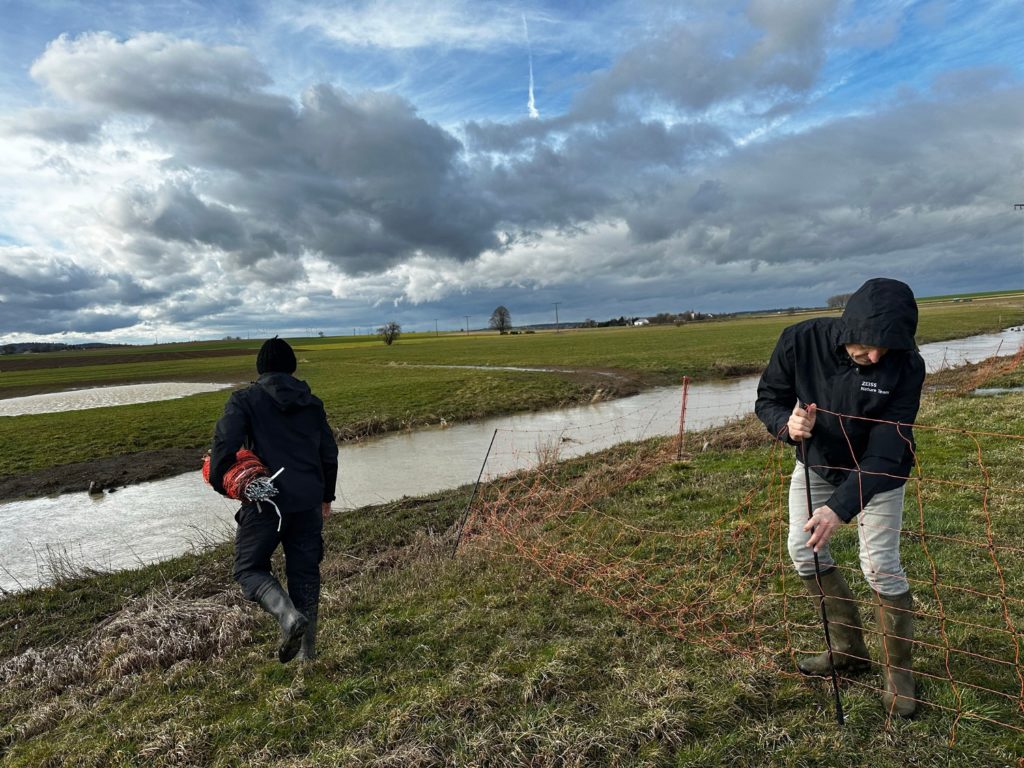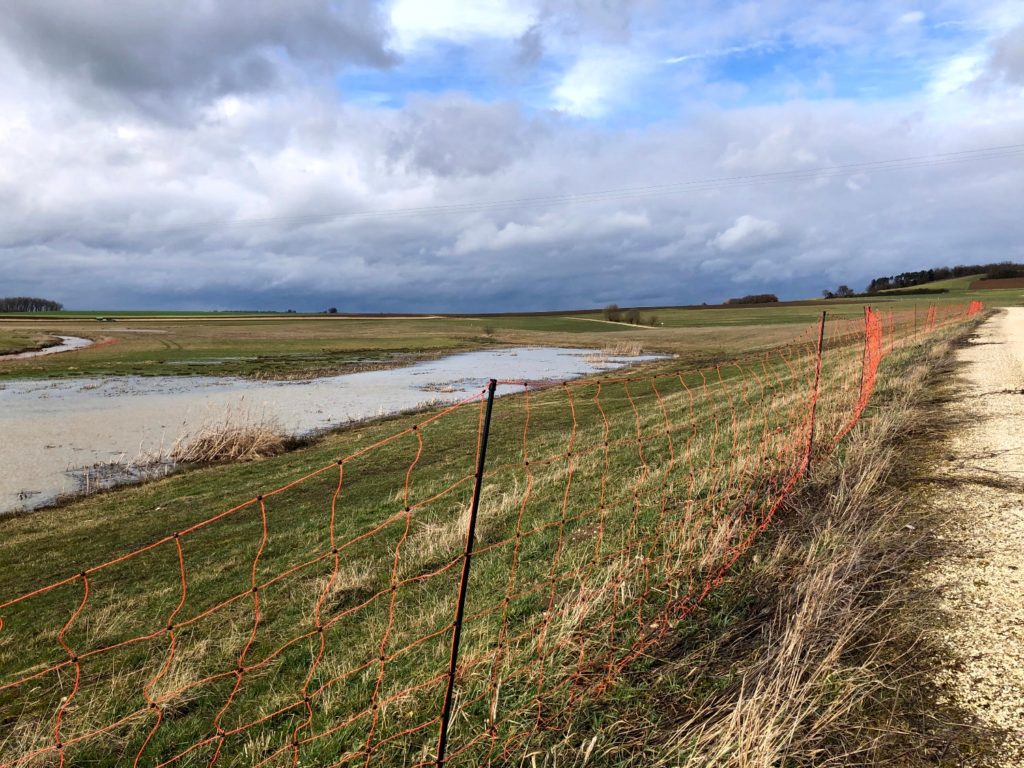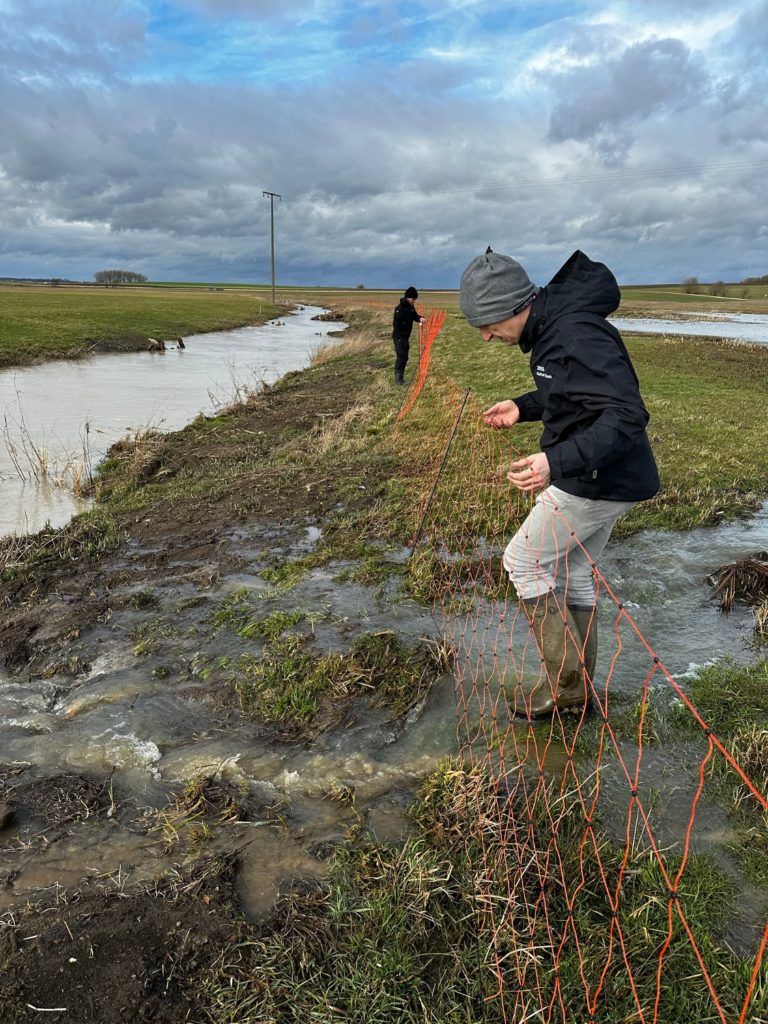Our Nature Team actively supports
Together with representatives of the NABU local association Ellwangen, we were able to build an approx. 800m long electric fence in the meadow breeding area “Itzlinger Lachen” to protect the lapwings breeding there.
The lapwing (Vanellus vanellus) used to be a common and widespread bird of the open countryside, breeding in wet meadows, marshes and swamps. Due to various causes such as the draining of wetlands, the intensification of agriculture and the increase of soil predators, the population of the lapwing have declined massively in recent decades. Today, the lapwing is on the Red List of bird species threatened with extinction.
Breeding lapwings can be found in Central Germany today almost exclusively in wet river valleys or nature reserves. In the border area of the Ostalbkreis to Bavaria there is still a stable number of more than 13 breeding pairs, which have been actively protected annually for 10 years.
In addition to the search for nests, marking and protection from soil cultivation, the caretakers also look to improve the breeding and food supply once again by wetting meadows, creating pools and planks.


In recent years, it has been noted that lapwings are increasingly laying their clutches in nearby fields rather than breeding in traditional wet meadows. This commonly occurring trend is due to the increasing number of ground predators such as foxes, raccoons and martens. The caretakers have now reacted to this.
With the help of the temporarily installed electric fence, ground predators are to be kept away from the breeding area of the lapwing. The lapwings are currently returning from their wintering grounds in France, Spain and Portugal and the erection of the electric fence is intended to encourage them to lay their clutches again in the extensively managed wet meadows.

At the nearby water areas, the young birds find sufficient food and hiding places. Lapwings are so-called nest fledglers and already a few hours after hatching, the chicks leave the nest to go in search of food together with their mother. The first few days after hatching, the female parent bird can often be found “hooting”. This involves the fledglings, still sparsely feathered, slipping under the mother’s wings and plumage to protect themselves from adverse weather conditions.
We are pleased to contribute to the preservation of the breeding sites of lapwings through this initiative and hope to positively influence the populations in the Ostalbkreis!